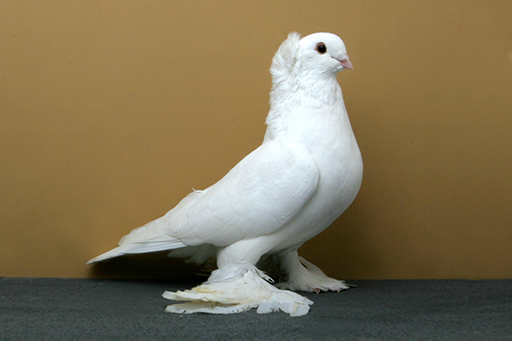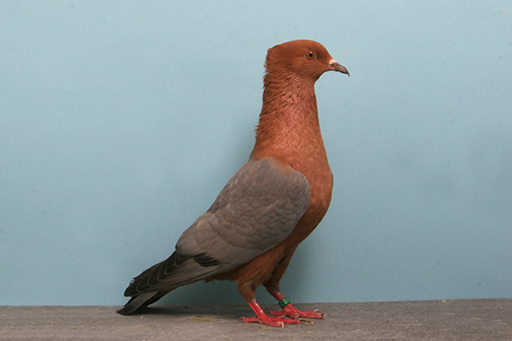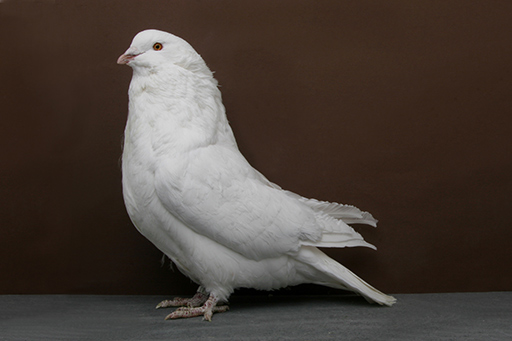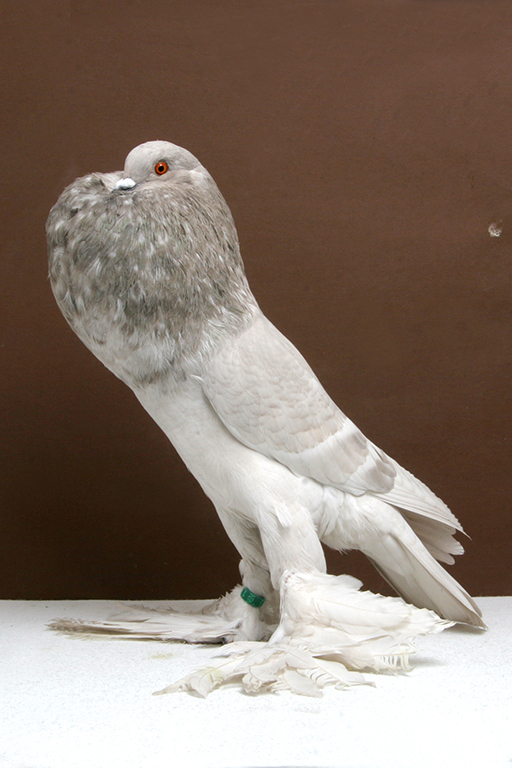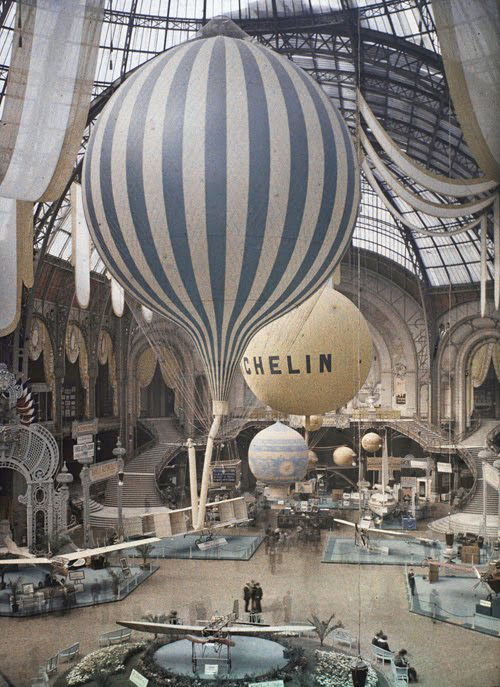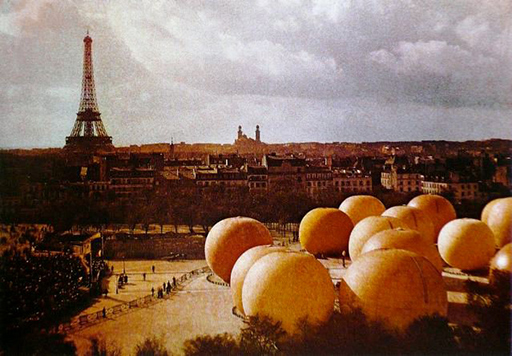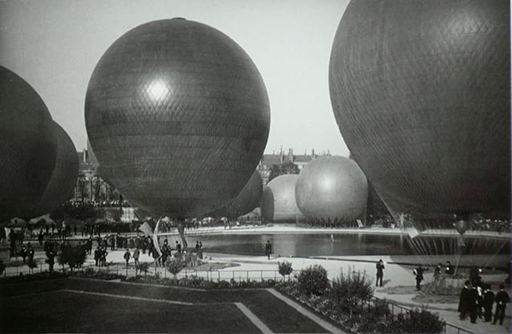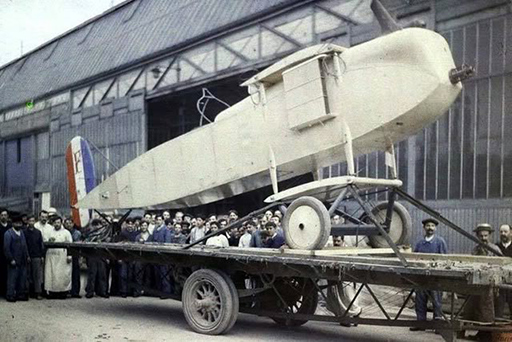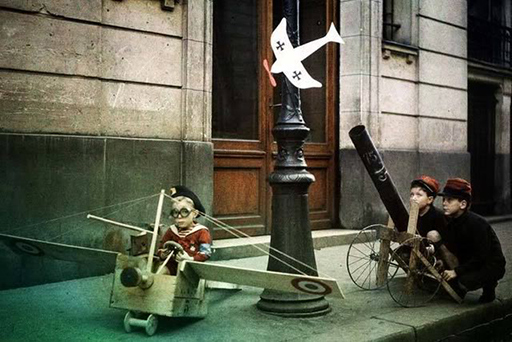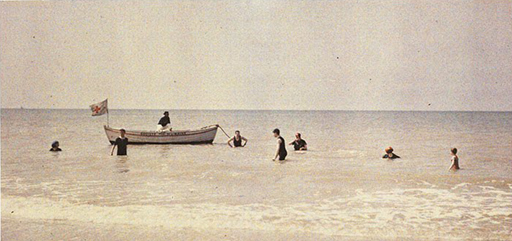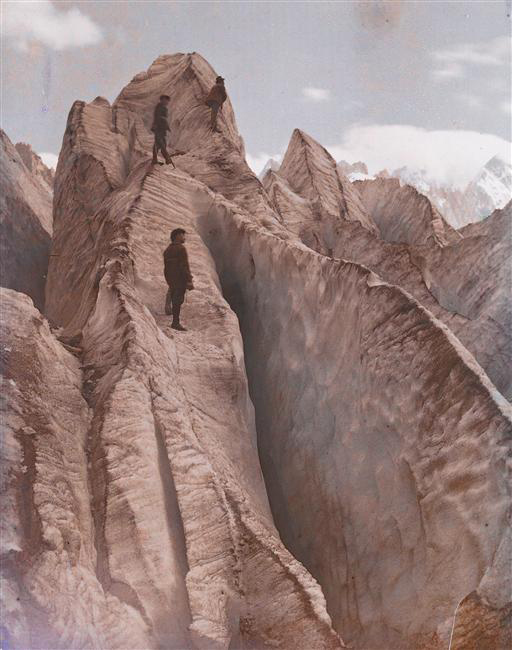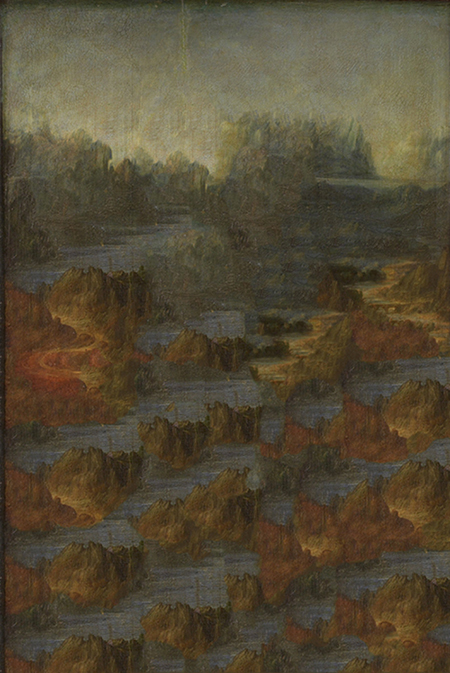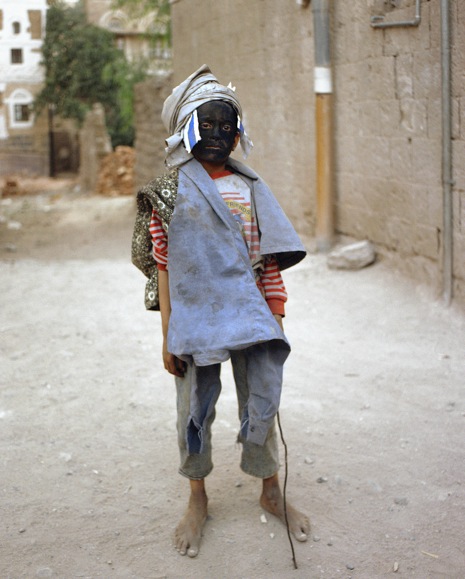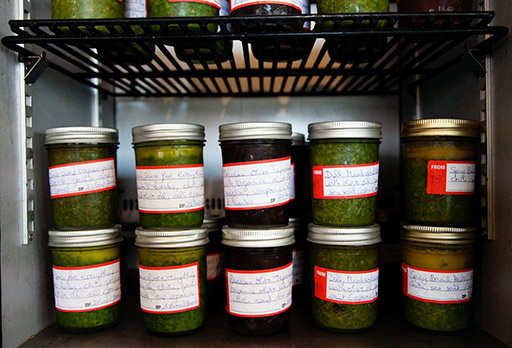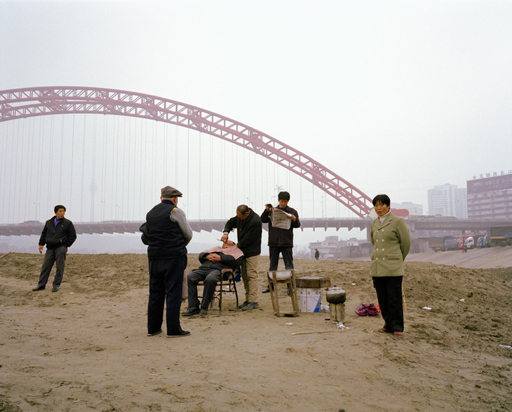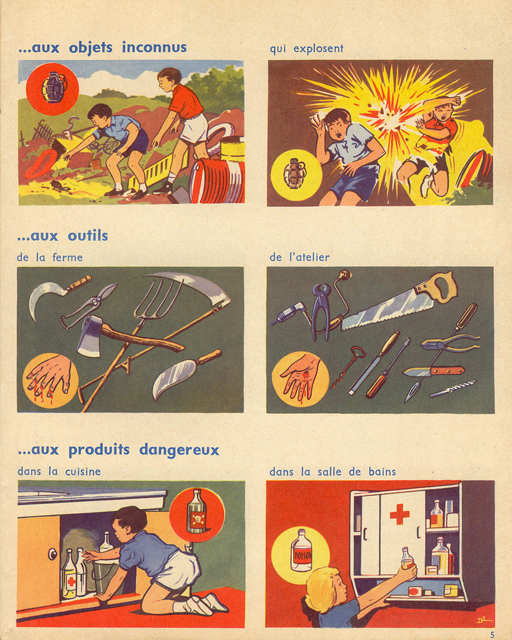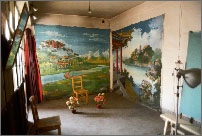April 7, 2011
Champion Pigeons of the National Pigeon Association
These portraits of champion pigeons on the National Pigeon Association site are compellingly beautiful (and I don't even like pigeons).
Many more can be found on the National Pigeon Association site. Photos from 2007, 2008, 2009.
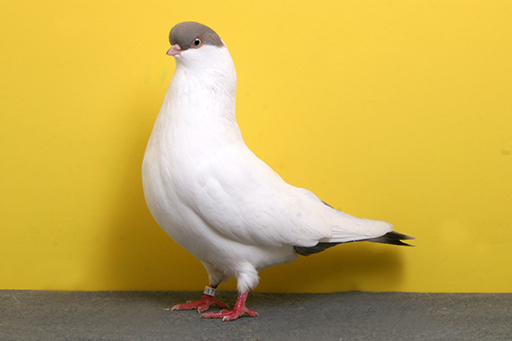
Related: Beautiful Nests
April 7, 2011
I want to live in Leon Gimpel's world if only for a minute...
These are a few things I know about Léon Gimpel.
1. He loved machines.
2. He was obsessively curious.
3. He dreamed of flight.
4. He loved the dark as much as he loved the light.
A beautiful book of Gimpel's work can be purchased through the Amazon UK store.
April 7, 2011
The Liljenquist Family Collection of Civil War Photographs
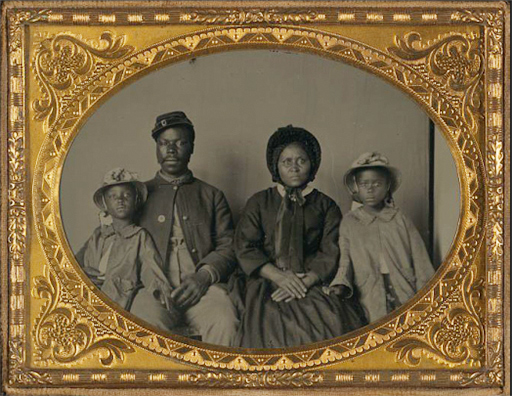
The Library of Congress is featuring a large collection of over 300 Civil War ambrotypes and tintypes. They're beautiful, especially at high resolution—and the Library has included high resolution downloads for almost every image, with more variety than I've ever seen in one place. Always be sure to read the captions. Many are heartbreaking and the words tend to fold the distance between the 1860's and today.
A flash slideshow of a few curators picks can be found here, but the best way to view the pictures is to just dive in.
April 7, 2011
Replaced
"Replaced" by artist Mike Ruiz was created by using photoshop's content aware fill to paint out the Mona Lisa, leaving only her background. The image was then sent to a Chinese copy artist to be painted in oil.... It's a nice try for a computer + copy artist, but I don't think the landscape would be so photoshoppy repetitive, I'll bet the copy artist could have done better on his/her own. Also shouldn't the title be 'Removed'?
I've seen a couple of artworks playing on this idea although this and this one are the only ones I've found online (as an aside MegaMonaLisa is one of the more bizarre sites I've stumbled upon this week).
The landscape in the background has long been a source of studys. One popular theory holds that the background is a painting of the landscape near Bobbio in Northern Italy, based on the theory that the numbers 7 and 2 (hidden in a span of the bridge in the painting) refer to 1472, when a flood washed away Bobbio's bridge. This seems farfetched to me.
Some believe the bridge is the Buriano, near Arezzo. Other historians based on information in Leonardo's topological surveys believe the background depicts the area near the confluence of the Arno and Chiana rivers (In this scenario the sitter obscures a view of Lake Chiana). This seems like a more reasonable theory to me, although it's just as likely Leonardo just drew a background he created from whole cloth.
(Mike Ruiz image is via Good)
April 8, 2011
My 6 year old from his bunk bed
R: Dad do you remember before I was born?
Me: Yes.
R: Was everything the same?
Me: You weren't here, so it was different. We were lonely but we didn't know it.
R: Where was I?
Me: You weren't made yet.
R: Sometimes I think I remember.
Me: Before you were born?
R: Yeah. It just was like space or something.
Me: What did it feel like?
R: Sad. I didn't know anything. I didn't even know what to think. Maybe I was lonely. I don't know. It's complicated to think about. I remember things from a long time ago.
[Quiet]
R: Did you ever travel to a high mountain before I was born?
Me: Yes.
R: I remember that. The stars were beautiful.
---
Later:
R: I saw a ghost in your room.
Me: What did it look like.
R: It was standing by your bed while you were sleeping. I was scared.
Me: Ghosts aren't real.
R: That one was.
---
Later:
R: Dad are you still there?
Me: Yes.
R: What are you doing.
Me: Thinking.
R: I like all kinds of mammals.
Quiet. Then snoring.
April 11, 2011
Robert Polidori
Robert Polidori's Yemen pictures from a 1996 assignment are interesting, but are presented very very small and without much context. Come on New Yorker! Bigger pictures! More words!
Poliodori did not know what was going on in the image above. And anyone who has travelled far away knows the phenomenon of the strange child vagabond, who appears, watches, and vanishes. The blackface must have some significance. Do any of the readers here have any idea? The only reference I could find online this one which seemed to be about another custom.
Polidori is known for popular coffee table book architectural projects covering Versailles, Havana, Chernobyl etc... but I much prefer this looser style of work from Yemen. Where can we see more?
April 12, 2011
Edible Selby
A few years ago Todd Selby photographed scores of creative people in their work spaces for the project The Selby Is in Your Place. Now he's back photographing the people making modern food culture and their workspaces with Edible Selby. I predict this project will be just as popular as the first. To use an overused term, it's a visual feast.
April 12, 2011
Fortune Cookie
"I mean, I read it, I read it, and I just instinctively sort of, you know, if it says something like: 'Conversation with a dark-haired man will be very important for you,' well, I just instinctively think, you know, who do I know who has dark hair? Did we have a conversation? What did we talk about? In other words there's something in me that makes me read it, and I instinctively interpret it as if it were an omen of the future, but in my conscious opinion, which is so fundamental to my whole view of life, I mean, I would just have to change totally to not have this opinion, in my conscious opinion, this is simply something that was written in the cookie factory, several years ago, and in no way it refers to me! I mean, you know, the fact that I got--I mean, the man who wrote it did not know anything about me, I mean, he could not have known anything about me! There's no way that this cookie could actually have to do with me! And the fact that I've gotten it is just basically a joke! And I mean, if I were to go on a trip, on an airplane, and I got a fortune cookie that said 'Don't go,' I mean, of course, I admit I might feel a bit nervous for about one second, but in fact I would go, because, I mean, that trip is gonna be successful or unsuccessful based on the state of the airplane and the state of the pilot, and the cookie is in no position to know about that."
-Wallace Shawn in My Dinner With Andre
Related: The Elephant Vanishes, The Screenplay
April 15, 2011
Secret Clubs
R: "Dad, you know that girl Mimi?"
Me: "Yes."
R: "I used to HATE her. Really really hate her. And she HATED me. So much."
[quiet]
R: "But you know what's strange? Now we're in a secret club together. Now we're friends. Don't you think that's so weird."
[quiet]
R: "We're not allowed to have secret clubs in school, but everyone has them anyway."
Me: "What club are you in?"
R: "We're deciding on a name. It's a club I made. We study strange things like ghosts, and toys that move, and shadows that wave at you. Stuff like that. You know spooky stuff. We're writing notes down."
[quiet]
R: "Oh no. I just thought of something. What about vacation? How will we make meetings? I didn't think about that. It might be really bad."
[quiet]
Me: How many people are in your club?
R: "Three. Our club is really really secret. We don't tell anybody. Other people could join, but it takes a special kind of person. Nobody knows about it."
April 16, 2011
Rona Chang
Rona Chang is a Queens based Chinese photographer working on several ambitious projects investigating man's control (or lack of control) of nature. She writes, "It is the intersection of human, climatic, and geographic realms that are contemplated in my photography." Her image sequencing disorients us (intentionally I believe) by juxtaposing images connected by ideas rather than location. This is work I'd much rather see in person than on the web. Show please.(via flak)
April 17, 2011
Agence Eureka
Agence Eureka has quickly become one of my favorite sources for visual inspiration. The site features French printed material from the 20's-70's. A few examples: children's games, type samples, vintage costume patterns and on and on...
April 18, 2011
1987
What to do about an old journal?
Blank save for three overwrought pages from 1987 (full of intrigues from forgotten parties) and a small set of drawings (labeled December 1988 of a mountain in Mexico — the view from my abuelito's window).
Then, apparently, nothing. Forgotten until tonight.
Bound in hand tooled chocolaty leather and adorned with hand annotated vintage maps pasted onto the end pages by me, it is a handsome volume — the kind of thing a twenty year old me would think proper to keep on a desk. Inside, the blank unruled pages hate being empty... and I am eager to fill them...
And yet... the emptiness speaks of the years between here and there, so I hesitate.
Hmmm.
April 26, 2011
Wild Flavor
If you are interested in food, endangered species, epidemiology, or modern China I recommend seeking out Karl Taro Greenfeld's 2005 Paris Review essay on Guangzhou's 'wild flavor' bush meat restaurants. An excerpt:
Now this style of dining, which was once a quaint local custom, had become industrialized. In one cage at Xinyuan I counted fifty-two cats packed so tightly that their guts were spilling out between the wire bars. There were fifty such cages in that stall. There were fifty-two stalls along that row of vendors. There were six rows of vendors in that market. And there were seven markets on that street. A sharp, musky smell overwhelmed me—the excrement of a thousand different animal species mingling with their panicked breath. I saw at least a dozen types of dogs, including Labradors and Saint Bernards, and there had to be at least as many different breeds of house cat. There were raccoons, dogs, badgers, civets, squirrels, deer, boars, rats, guinea pigs, pangolins, muskrats, ferrets, wild sheep, mountain goats, bobcats, monkeys, horses, ponies, and a camel out in the parking lot. And these were just the mammals. The choice of birds and reptiles was every bit as diverse. Predator was sometimes stacked atop prey. Damaged animals—those that had lost a paw, say—were kept alive with intravenous drips. And because wild animals were more valuable than farm-raised creatures, I was told that some traders would slice off the hind paw of a civet or badger to make it appear to potential buyers that the animal had been trapped in the wild.I had brought a list of banned animals from the Wild Animal Protection Office. I asked for the rare bird species, the monkeys, the tigers.
“No problem,” I was told by a smiling trader with buckteeth who said he was from Guangxi.
“What about the authorities?” I asked.
“No problem.” He pointed to a fellow in a gray and blue uniform sitting on a white plastic chair, flicking his cigarette ashes by a bag of banned snakes.
“OK, how about mountain lion?”
“No problem.”
“Black bear?”
“No problem.”
I decided to push my luck.
“How about panda?”
He shook his head. “You must be sick.”
The entire article is available in this back issue of the review, as a chapter of the excellent
The Best Creative Nonfiction, Vol. 1, and as a portion of China Syndrome: The True Story of the 21st Century's First Great Epidemic (which I haven't read but plan to!).
April 27, 2011
Flight



